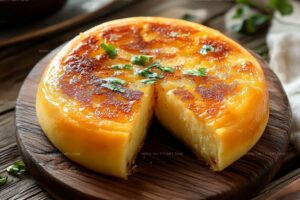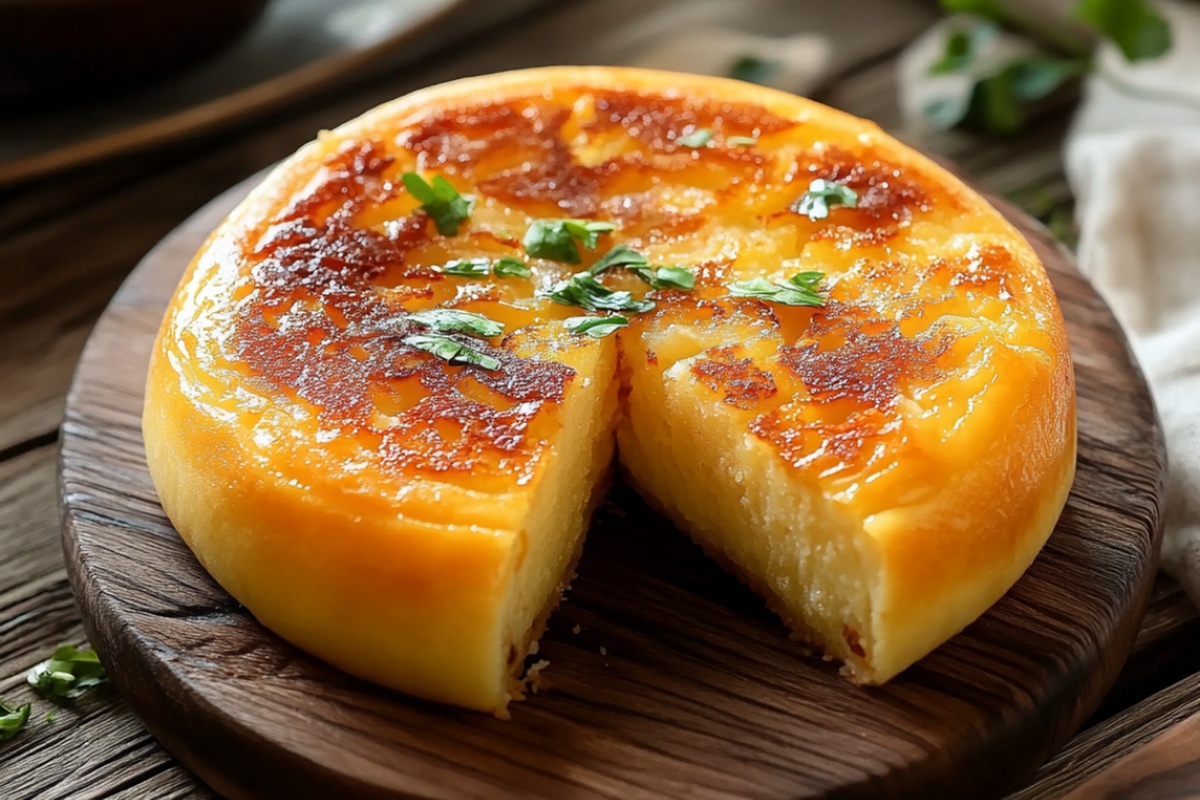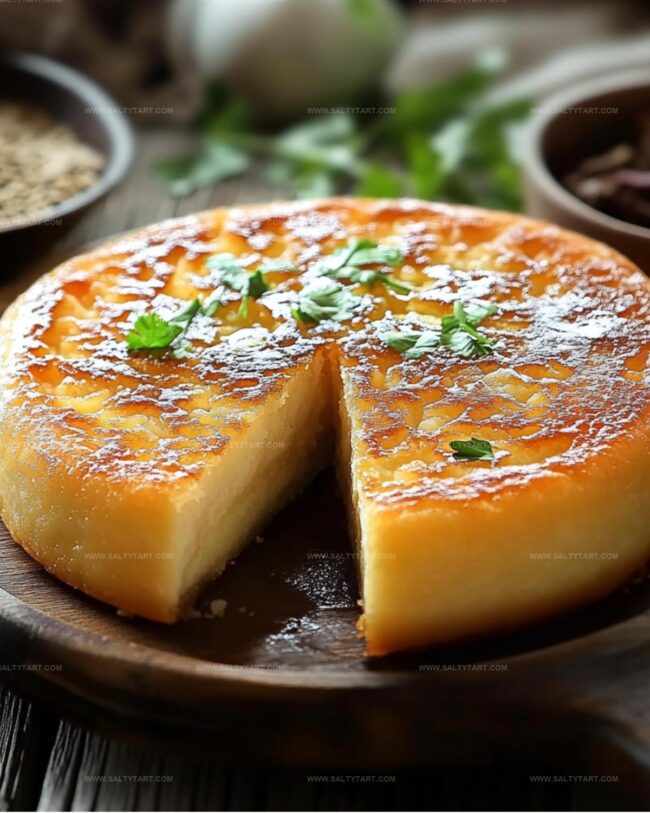Sweet & Fluffy Chinese Egg Cake Recipe: A Taste of Home
Soft, pillowy, and incredibly light, this Chinese egg cake recipe brings the warmth of traditional bakeries right to your kitchen.
Every bite whispers stories of street-side vendors and beloved family gatherings.
These delicate cakes emerge golden and cloud-like from the oven, promising a treat that melts on your tongue.
The simple ingredients create magic through careful technique and gentle folding.
Eggs transform into a heavenly sponge that’s both comforting and elegant.
Each slice promises a moment of pure culinary joy.
Bake this delightful cake and transport yourself to the bustling streets of China with just one heavenly bite.
Why Chinese Egg Cake Is So Fluffy
Ingredients for Light Chinese Egg Cake
Main Ingredients:Wet Ingredients:Seasoning:Steps for Baking a Classic Chinese Egg Cake
Step 1: Warm Up the Oven
Get your oven ready by setting the temperature to 350F. Prepare a round cake pan by greasing it or lining with parchment paper to prevent sticking.
Step 2: Whip Up the Egg Base
Grab a large mixing bowl and combine eggs and sugar. Use an electric mixer on high speed to create a fluffy, pale mixture.
Keep beating for 10-15 minutes until the volume dramatically increases and looks light and airy.
Step 3: Blend Liquid Ingredients
Pour in these liquid friends:Stir everything together until the mixture looks smooth and well-integrated.
Step 4: Gently Incorporate Dry Components
Sift together:Carefully fold these dry ingredients into the egg mixture using a spatula. Move slowly and gently to keep the air bubbles intact.
Step 5: Transfer and Bake
Pour the batter into your prepared pan, spreading it evenly across the surface. Slide the pan into the preheated oven and bake for 25-30 minutes.
The cake is ready when the top turns golden brown and a toothpick comes out clean when inserted in the center.
Step 6: Cool and Release
Let the cake rest in the pan for 10 minutes.
Carefully remove it and place on a wire rack to cool completely before serving.
Notes for Making a Fluffy Egg Cake
New Mixes for Chinese Egg Cake Fans
What Pairs With a Soft Egg Cake
Keeping Chinese Egg Cake Moist and Light
FAQs
Beating eggs and sugar for an extended time incorporates air, creating a light, fluffy texture that gives the Chinese egg cake its signature softness and volume.
Cake flour is recommended because it has lower protein content, which helps create a more delicate and tender cake. All-purpose flour might make the cake denser and less airy.
Check for a golden brown top and insert a toothpick into the center. If the toothpick comes out clean without any wet batter, the cake is done baking.
Print
Chinese Egg Cake Recipe
- Total Time: 50 minutes
- Yield: 8 1x
Description
Sweet memories of childhood come alive with this Chinese Egg Cake, a delicate dessert that whispers nostalgia from family kitchens. Fluffy, light, and subtly comforting, you’ll fall in love with its simple elegance and warm embrace of home-style baking.
Ingredients
Main Ingredients:
- 4 large eggs (room temperature)
- 1 cup cake flour (sifted)
- 3/4 cup (170 grams) granulated sugar
Liquid Ingredients:
- 1/4 cup (60 milliliters) whole milk (room temperature)
- 1/4 cup (60 milliliters) vegetable oil
- 1 teaspoon (5 milliliters) vanilla extract
Seasoning:
- 1/4 teaspoon (1.5 grams) salt
Instructions
- Prepare the baking vessel by greasing an 8-inch round cake pan and lining with parchment paper, ensuring smooth surface release after baking.
- Whip eggs and sugar using an electric mixer at high speed for 10-15 minutes until the mixture becomes pale, voluminous, and creates soft peaks that hold their shape.
- Incorporate vanilla extract, milk, and vegetable oil into the whipped egg mixture, stirring gently to maintain the airy texture.
- Delicately sift cake flour and salt over the liquid ingredients, using a spatula to fold the dry components into the batter with minimal stirring to preserve the trapped air bubbles.
- Transfer the gossamer-light batter into the prepared pan, smoothing the surface with a spatula to create an even layer.
- Place the pan in a preheated oven at 350°F (175°C) and bake for 25-30 minutes, monitoring until the top turns golden brown and a toothpick inserted at the center emerges clean.
- Remove from the oven and let the cake rest in the pan for 10 minutes to stabilize its structure, then carefully unmold onto a wire rack to cool completely.
Notes
- Beat eggs and sugar thoroughly until pale and voluminous, which creates the cake’s signature fluffy texture and ensures maximum airiness.
- Use room temperature ingredients to help eggs incorporate smoothly and achieve better volume during mixing.
- Fold flour gently and minimally to prevent deflating the delicate egg mixture, maintaining the cake’s light and tender crumb.
- Try flavor variations by adding citrus zest, almond extract, or replacing some flour with matcha powder for unique twists on the classic recipe.
- Prep Time: 20 minutes
- Cook Time: 30 minutes
- Category: Breakfast, Snacks, Desserts
- Method: Baking
- Cuisine: Chinese
Nutrition
- Serving Size: 8
- Calories: 186 kcal
- Sugar: 14 g
- Sodium: 88 mg
- Fat: 9 g
- Saturated Fat: 1.5 g
- Unsaturated Fat: 7.5 g
- Trans Fat: 0 g
- Carbohydrates: 19 g
- Fiber: 0.3 g
- Protein: 4 g
- Cholesterol: 56 mg



Jess Martinez
Contributing Recipe Writer & Nutrition Consultant
Expertise
Southwestern and Latin American cooking, Nutritional analysis and healthy recipe planning, Cultural food traditions, Modifying traditional dishes for better health
Education
Santa Fe Community College
Certificate in Culinary Arts
Focused on mastering the flavors and cooking methods of traditional Southwestern cuisine.
Jess’s love for bold, homegrown flavors led her straight into the world of Southwestern cooking and cultural nutrition.
After completing her Certificate in Culinary Arts at Santa Fe Community College, she made it her mission to show that good-for-you food can still taste incredible.
At saltytart.com, Jess shares vibrant, health-conscious recipes with roots in tradition but a fresh, modern twist. When she’s not testing new recipes, you’ll find her at local growers’ markets, tending her herb garden, or digging into food history books.